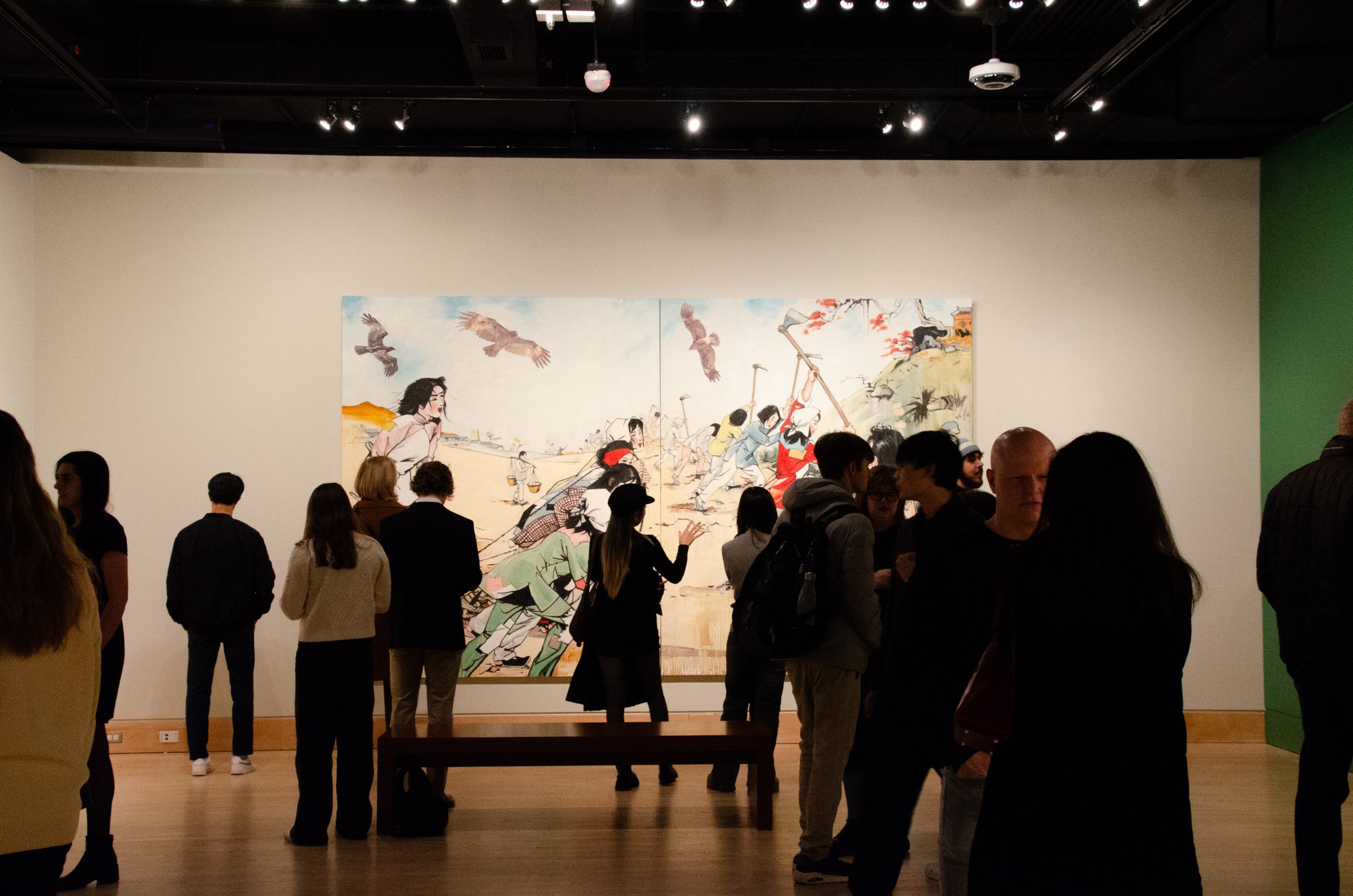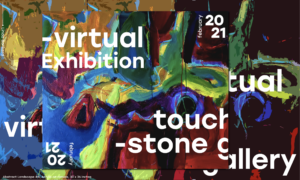At first glance, Georgetown’s two most recent gallery exhibits—which debuted on Jan. 17—could not seem more different. In one corner of the Walsh lobby, a set of black-and-white photos wrap around the Spagnuolo gallery’s small room. Across the hall at the De la Cruz gallery, visitors walk through a series of rooms, each wall dedicated to a new sprawling canvas in bright colors.
Though the two galleries operate separately, the stories that each exhibit reveals bring them together. Both exhibits combine art history with people’s history: the de la Cruz exhibit includes a brochure providing historical context about 1960s China in addition to artifacts from the artist’s life, while the Spagnuolo exhibit captured histories of Georgetown students and alumni through photography. Georgetown student curators led both projects.
De la Cruz gallery – “Hung Liu: Happy and Gay”
At the de la Cruz gallery, “Hung Liu: Happy and Gay” took the vision of sharing untold stories to the global level. Students researched the life of Hung Liu, an understudied mixed-media artist whose life split between San Francisco and Changchun, China before her passing in 2021. The exhibit commemorated her life through her paintings and childhood artifacts such as her middle school English notebooks.
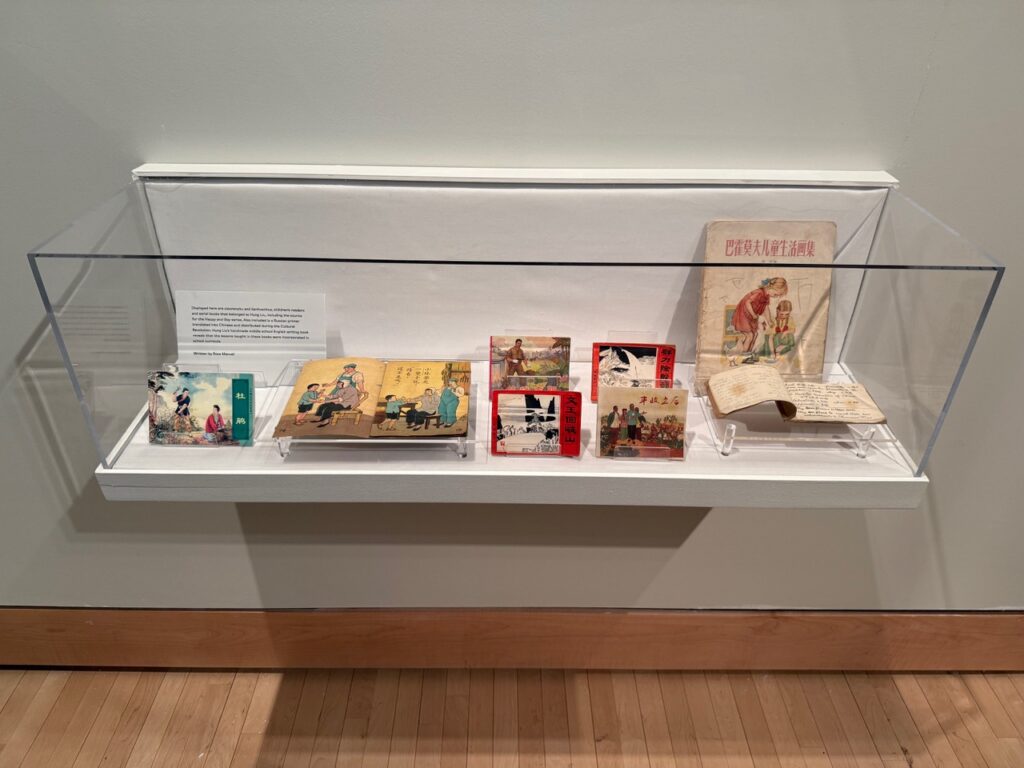 Photo courtesy of Dorothy Moss
Photo courtesy of Dorothy Moss
Dorothy Moss, Director of the Hung Liu Estate and former curator at the National Portrait Gallery, led a graduate student seminar about Liu’s life and curating her work. She and her students chose to keep the exhibit title that Liu used when she first displayed her work in 2012 at a gallery in San Francisco. Liu explained in an interview at the time that the title “Happy and Gay” reflected how propaganda during Liu’s childhood in Changchun made her and her peers feel they must act, always appreciating the opportunities they had without questioning or criticizing authorities or the government.
When recreating images of propaganda in her own art, Liu drew from examples of American media as well. Although the subjects were Chinese and her life in China had inspired the original work, Dick & Jane children’s books that depicted idealized visions of the nuclear family and the American Dream helped inspire her art style.
“Hung Liu took the Dick & Jane ideologies and flipped them to resemble life under Mao’s regime in China,” Rosa Manuel (GSAS ’25), a student curator, said.
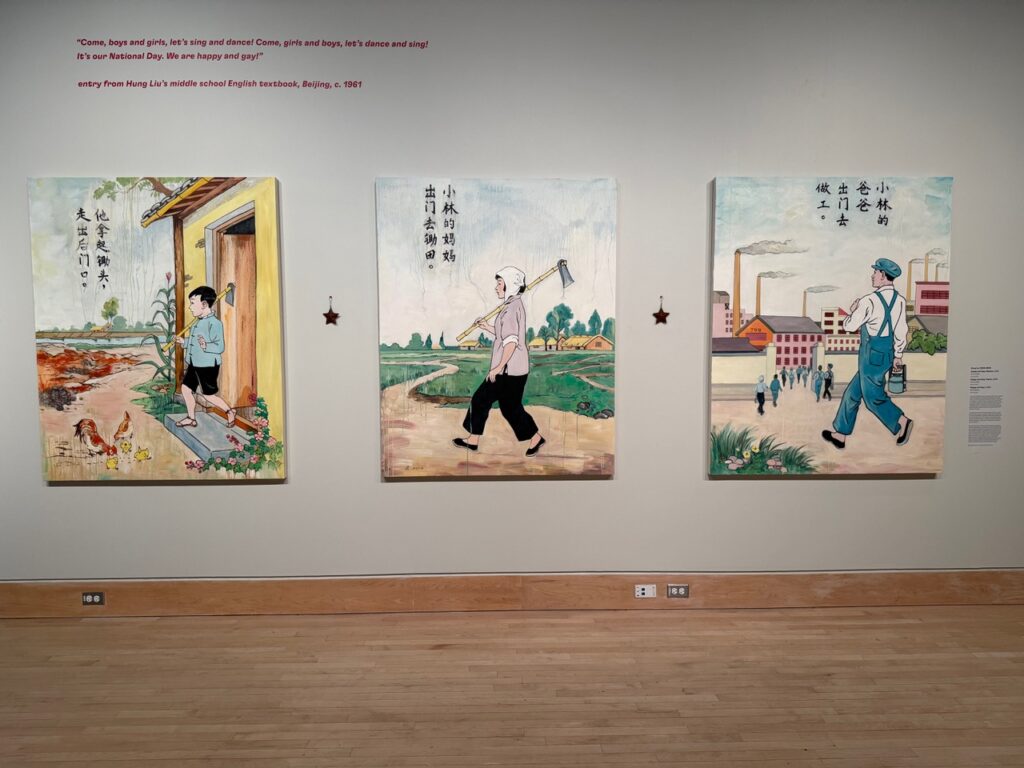 Photo courtesy of Dorothy Moss
Photo courtesy of Dorothy Moss
Mao Zedong came to power in 1949 and remained in control of the government until his death in 1976. While in power, he restricted freedom of speech, particularly voices of dissent, and would sometimes close schools and universities to enforce his laws. By the end of his regime, 50% of China’s population lived below the poverty line.
Students from both exhibits spent the fall semester researching and curating. Rosa Manuel (GSAS ’25), a student curator for “Hung Liu: Happy and Gay,” described the meticulous process of presenting four months of study and work.
“Every detail was very intentional, down to the inch hanging the canvas and the precise shade of the wall,” Manuel said. “The wall color was carefully chosen not to stereotype her work using a color like red. We chose a series of pastels which drew people to the exhibit.”
Each student’s close study of a different painting in the exhibit fostered that precision. Moss, who led the graduate student curation seminar, encouraged Manuel and her peers to choose a painting to examine in detail through a research-length paper.
Manuel felt like the final exhibit could pay a tribute to Liu, especially after Liu’s husband, Jeff Kelley, got involved with the project.
“Her husband was finalizing her work and contributing to something that honored her even though she wasn’t there,” Manuel said.
The student curators also worked with Moss on a book about Liu’s life and work that will come out in the next few weeks, in addition to a documentary that will come out in 2026.
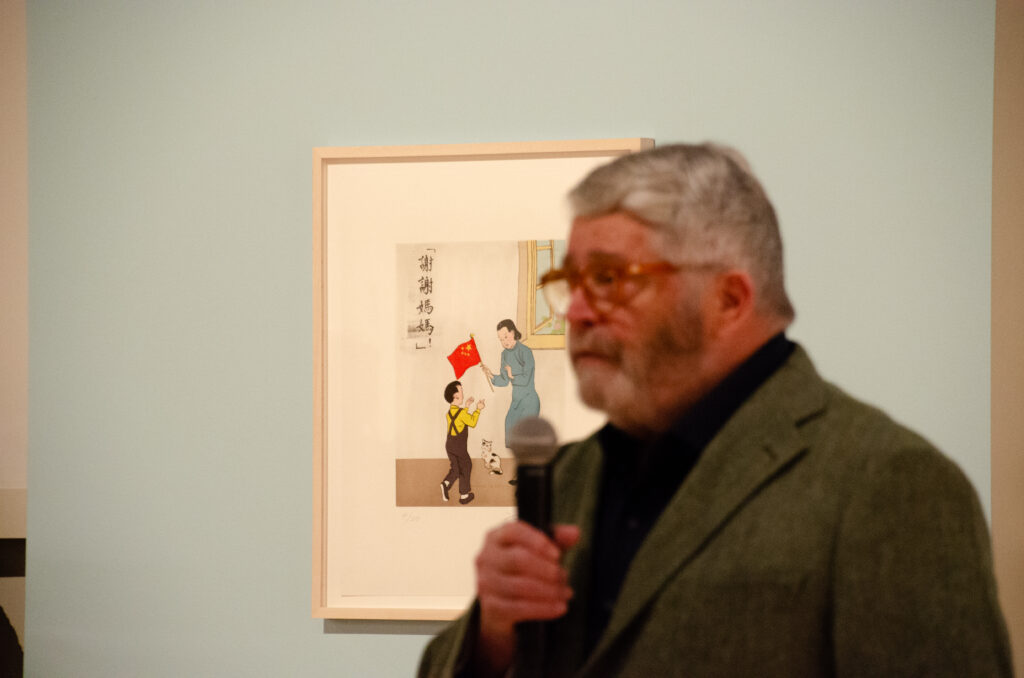
Photo by Sabrina Shaffer Liu’s husband, Jeff Kelley, at the exhibition openingPhoto by Sabrina Shaffer
Spagnuolo photo exhibit: “& Loving”
Just across the hall from the Moss exhibit, the hard work of another group of students went on display.
The Spagnuolo photo exhibit, “& Loving,” came from special collections tucked away in Lauinger Library. Students selected 13 photos from a collection of thousands to display. Past Georgetown students or alumni were behind the camera in many of the photos from their final selection, which centered on the theme of human connection.
The black-and-white photos captured different types of play—children tromping through the snow, a live jazz combo, and a rowdy concert crowd. The exhibit also included quieter depictions of connection like a man gently lifting a child and a woman smiling softly as nature surrounds her.
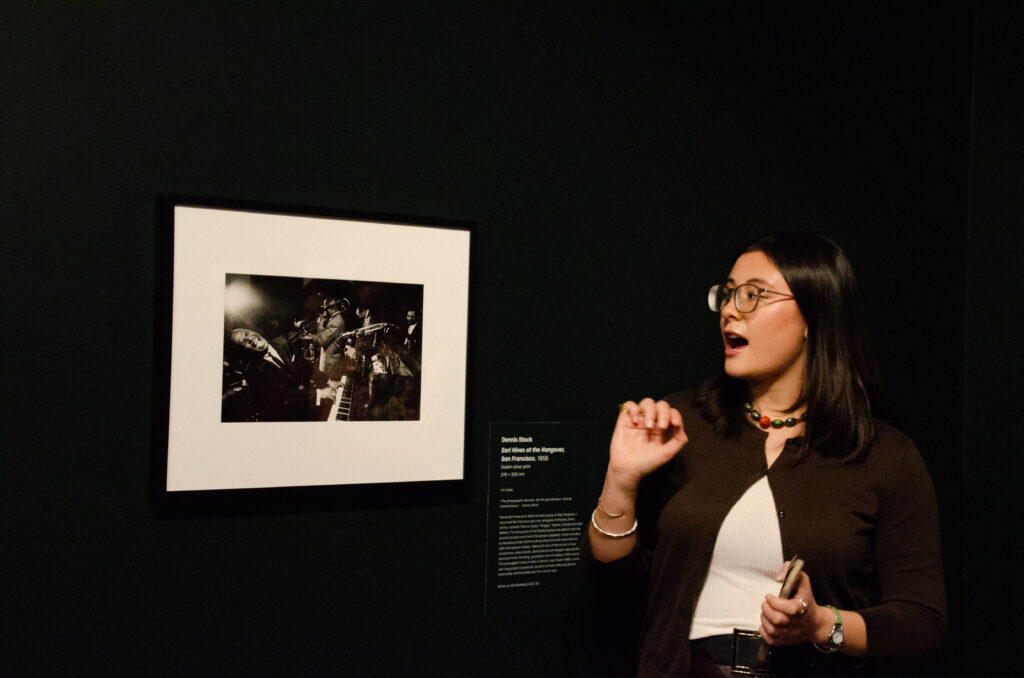
Photo by Sabrina Shaffer Undergraduate student curator Ella Boasberg (CAS ’25)Photo by Sabrina Shaffer
Khaki Sawyer (CAS ’26) and her classmates developed personal connections to the “& Loving” exhibition while working Professor Ian Bourland’s undergraduate curating seminar. She said that students grew attached to specific photos and found it difficult to let go when they had to narrow the selection from hundreds to just 13.
“[“& Loving”] was like our class’ brainchild, and students defended certain photos very passionately,” Sawyer said. “All of these works are not pictures that anybody who’s visiting the exhibition are in, but there’s a sense of recognition, of seeing yourself in these photos that was important to me.”
Professor Bourland encouraged students to bring themselves into this project. The students had the responsibility of choosing the exhibition’s theme and title.
“The title comes from a quote: ‘Photography is a way of feeling, of touching, of loving. What you have caught on film is captured forever,’” Sawyer said.
Sawyer attributed the quote to Aaron Siskind, a principal figure in modern art and abstract photography.
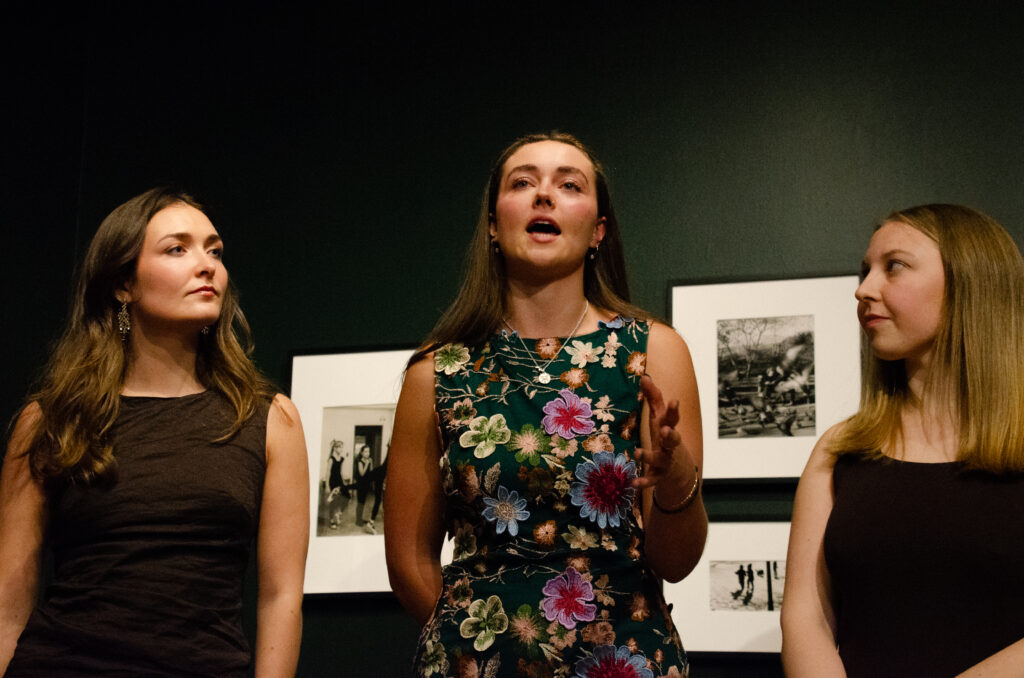
Photo by Sabrina Shaffer Undergraduate student curators of “& Loving”: Amelia Myre (SFS ’25), Khaki Sawyer (CAS ’26), and Caroline McCannPhoto by Sabrina Shaffer
Although they found themes in the photos that could speak to a universal audience, Sawyer pointed out that the selection mostly includes older photos—when fewer people had access to cameras—affecting the exhibit’s inclusivity.
“It’s a hard kind of balance to strike because these are the only photos we have since all the photos were donated,” Sawyer said. “But we have to acknowledge how important it is to have representation in the arts, and in it being a limited pool, this is a limited perspective.”
Jaynelle Hazard, who started directing the gallery in August 2024, shared some of her plans for the gallery’s future. She will curate her first exhibit at Georgetown in Fall 2025, when she intends to spotlight a diverse series of artists over the course of the following two-year exhibition schedule.
“I’d like to bring in different artists of color and a variety of installations, including video-based works,” Hazard said. “I think it fits the setting. Galleries have always done a great job of creating exhibitions that foster conversations about societal and cultural issues today.”


